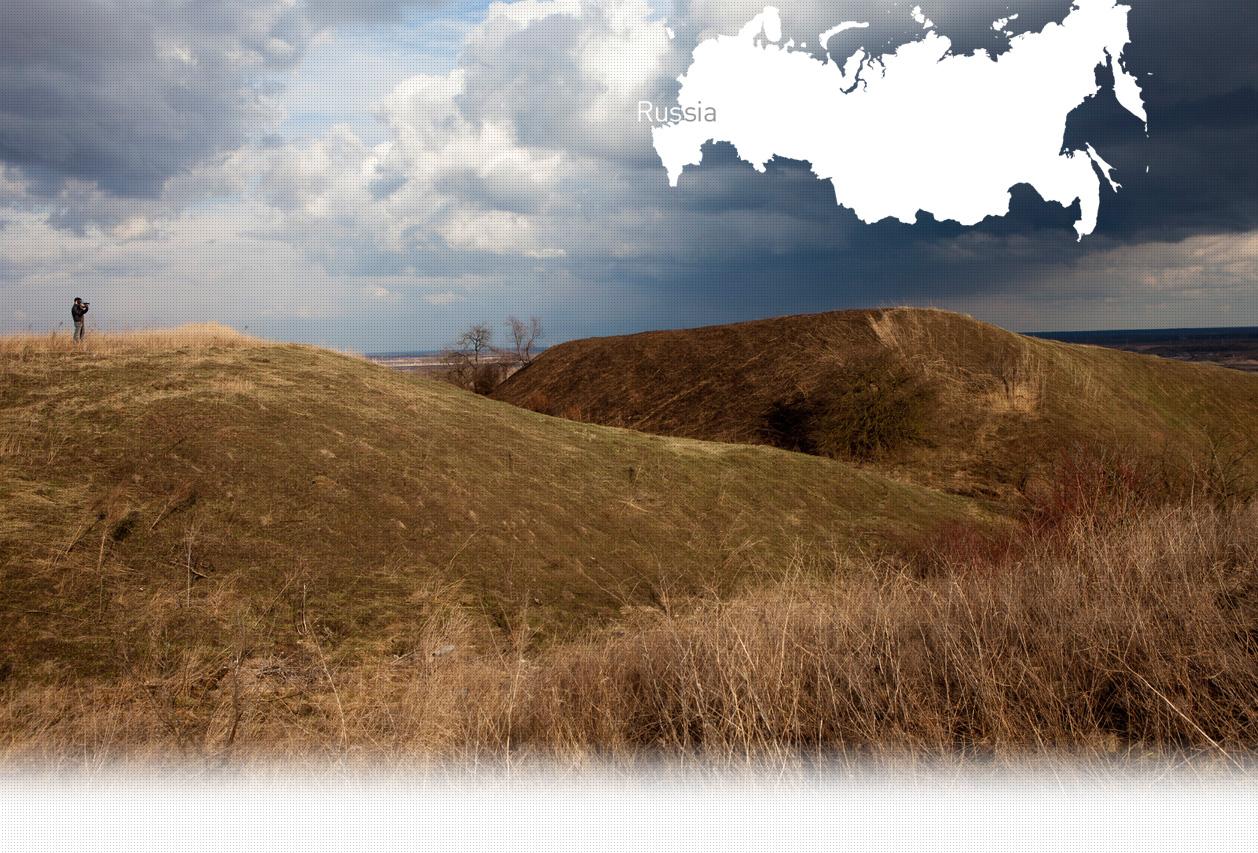

1 Killing site(s)
Maria K., born in 1937, saw the arrest of 3 Jewish families: "Germans in black uniforms arrived and gathered the 3 families in their house. While they exited, the women held their dead babies in their arms. They had been poisoned. Among the victims, there was a little girl who I played with. They told her that they would be brought to Palestine." "Two days after the shooting, the starosta requisitioned the women from the village to cover the bodies of the victims. Their bodies were covered in long headscarves." (Witness n°615R, interviewed in Gocharovka, on November 21, 2015)
"Since the summer of 1941, in the village of Vodino, lived a group of refugees of Jewish nationality [who had] arrived from Bessarabia and Ukraine. When the German troops approached, some of them decided to leave, but Hitler’s troops who arrived on August 4 last year [Note: 1942] blocked their way. So, these people came back and settled in a sheepfold [...] near my house. The Germans chased them into a small kitchen and settled in instead of them. Then, I saw all the other Jews in our village gradually gather in that kitchen. It turned out that they had been rounded up under the pretext of being displaced to their homeland. The Germans held them for about three weeks [...]. It was not uncommon to hear screams and shouts from the tortured people. Finally, the Germans decided to exterminate them. At that time, I was near the "Krutaya" ravine; we were sowing barley. I was in the first row of sowers and I was the first to see two trucks and two cars heading in our direction. After crossing the ravine, the Germans stopped 80 yards from us near the gasoline pit. Several Germans jumped out of the cars, ran up to one of the trucks and pulled a woman out. I recognized her: it was Riva Maizel who had been locked up [in the sheepfold] for three weeks. I heard a gunshot, and the woman fell into the pit. [...] I and other kolkhozes fell to the ground in horror. We saw nothing more, and we tried not to listen to the gunfire. A few minutes later, a German armed with a machine pistol came running and chased us away at gunpoint." [Deposition given to the Soviet State Extraordinary Commission (ChGK); Fond 7021, Opis 45, Delo 3/RG22.002M, Reel 10(III) p. 23-77].
Goncharovka and Vodino are Russian towns located 107km (66.5mi) southwest of Volgograd. Vodino was founded as a khutor [settlement] at the end of the 19th century. There is no exact information when Goncharovka was founded, but we believe it was at the same period. In 1914, 831 people lived in Vodino. The local population of the two villages was mainly involved in agriculture. There is no information regarding the Jews who lived in Vodino and Goncharovka before the war. When WWII broke out, dozens of Jewish refugees arrived in the town from German-occupied Ukraine and Belarus.
Goncharovka and Vodino were occupied by the Germans in early August 1942. In late August, 70 Jewish refugees, including women, children, and elderly people, were arrested in Goncharovka and Vodino. They were then loaded on trucks and taken to be shot in a ravine located outside of Vodino. According to the Soviet archives, the Germans conducted the massacre with Romanian assistance. After the war, the corpses of the victims were reburied. In June 2021, a new memorial to the Jewish victims was inaugurated. It preserves the names and memory of 43 murdered Jews in Vodino and ten other Jews from three families who were murdered in Goncharovka whose names have not been identified.
Do you have additional information regarding a village that you would like to share with Yahad ?
Please contact us at contact@yahadinunum.org
or by calling Yahad – In Unum at +33 (0) 1 53 20 13 17